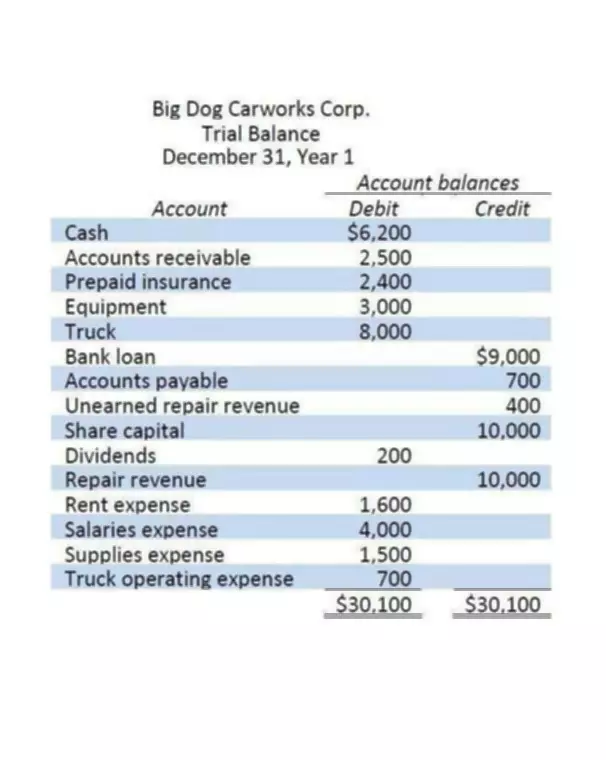Content

The most likely reason for differences between the costs of goods manufactured and sold is simply that the mix of products sold does not exactly match the mix of products manufactured. A retail operation has no cost of goods manufactured, since it only sells goods produced by others. Thus, its cost of goods sold is comprised of merchandise that it is reselling. Stay updated on the latest products and services anytime, anywhere. In contrast, a business that earned 400,000 but had a Cost of Goods Sold of $200,000 would have higher profits because although their sales were not as high, their gross margin percentage was higher. The Finished Goods Inventory consists of goods or services that have been totally completed and are ready to be sold to customers.
The market demand for the product is determined by the needs of the consumers. Get automatic manufacturing cost calculations with Katana ERP, as well as live inventory management, real-time production planning, and more essential manufacturing features.
Special Identification Method
When adding beginning work in process inventory and deducting ending work in process inventory from the total manufacturing cost, we obtain https://www.bookstime.com/ or completed. Cost of goods sold does not appear on the cost of goods manufactured statement but on the income statement. This formula will leave you with only the cost of goods that were completed during the period. Prime cost is the total manufacturing cost excluding the value of direct materials.
- A) is the amount transferred to Finished Goods Inventory from work in Process Inventory during the period.
- This calculation can be used to help businesses make pricing decisions, understand their production costs, and make informed decisions about their production processes.
- Total manufacturing cost has to be separately calculated with a different formula.
- The schedule reports the total manufacturing costs for the period that were added to the work‐in‐process .
- Goods manufactured is a term used for the cost of the inventory that is produced during a period.
- Direct labor includes the wages of the employees that were directly working to produce the goods.
For a business to calculate the actual amount of direct materials that were used for production, it is essential to take into account the T-Account for the raw materials inventory. Also see formula of gross margin ratio method with financial analysis, balance sheet and income statement analysis tutorials for free download on Accounting4Management.com. Accounting students can take help from Video lectures, handouts, helping materials, assignments solution, On-line Quizzes, GDB, Past Papers, books and Solved problems. Also learn latest Accounting & management software technology with tips and tricks.
Cost of Goods Manufactured (COGM): Definition, Formula, Calculation, Example, Journal Entry
Four of them have seniority or special skills and make $2,600 a month, the other four make $2,200 a month. The sum of their three-month salaries (as we decided that the accounting period for the calculations is a quarter, i.e. three months) is the Direct Labor Costs. The raw materials inventory is just the materials in inventory that are being stored until they are ready to be used in the production process. Investors looking through a company’s financial statements can spot unscrupulous inventory accounting by checking for inventory buildup, such as inventory rising faster than revenue or total assets reported. For example, airlines and hotels are primarily providers of services such as transport and lodging, respectively, yet they also sell gifts, food, beverages, and other items. These items are definitely considered goods, and these companies certainly have inventories of such goods. Both of these industries can list COGS on their income statements and claim them for tax purposes.

Calculate the value of the inventory at the start and finish. The following equation is used to calculate the COGM, or cost of goods manufactured. As you can see from the example, the calculation of COGM is very simple. All you need is the information about the beginning inventory, additions to inventory, and ending inventory. Costs included in Cost of Goods Manufactured For Sale are not subject to JSC approval as long as they are consistent with the definitions. Cost of goods sold is $200,000, the beginning balance in Finished Goods is $50,000, the ending balance in Finished Goods is $100,000, and the ending balance of Work in Process is $10,000.
Importance of Cost of Goods Manufactured
ReconciliationReconciliation is the process of comparing account balances to identify any financial inconsistencies, discrepancies, omissions, or even fraud. At the end of any accounting period, reconciliation involves matching balances and ensuring that debits from one account for one transaction is same as the credit to another account for the same transaction. Knowing your cost of goods manufactured is a good way of getting an overview of production costs and how they relate to the bottom line. Calculating COGM allows management to identify cash drains, adjust prices, and track the development of the business. Once the manufacturing costs have been added to the beginning WIP inventory, the remaining step is to deduct the ending WIP inventory balance. This calculation is used for the periodic inventory method. It is not needed for the perpetual inventory method, where the cost of individual units that are sold are recognized in the cost of goods sold.
- This includes the cost of materials, labor, and other expenses.
- Step 3 → In the final step, the ending WIP inventory is deducted, and the remaining amount is a company’s COGM.
- Profit is benefit realized when the amount of revenue gained from an activity exceeds the expenses, costs, and taxes needed to sustain the activity.
- Hotwax completed products costing $285,000 and transferred them to finished goods.
- The allowances are sub-divided broadly into two categories- direct labor involved in the manufacturing process and indirect labor pertaining to all other processes.